Use of Organic Compounds in Forensic Investigation: A Brief Review
Krishna Swamy G1, Shivaraj G1, Tadimety Madhu Chakrapani Rao2 and Sreenivasa S1,3*
1Department of Studies and Research in Organic Chemistry, Tumkur University, Tumakuru, Karnataka India
2 Tadimety Aromatics Pvt. Ltd, Hirehally Industrial Area, India
3Deputy Adviser, National Assessment and Accreditation Council, Bengaluru, Karnataka India
Submission:April 15, 2020; Published:April 24, 2020
*Corresponding author:S. Sreenivasa, Department of Studies and Research in Organic Chemistry, Tumkur University, Tumakuru-572 103, Karnataka, India
How to cite this article:Krishna S G, Shivaraj G, Tadimety Madhu C R, Sreenivasa S. Use of Organic Compounds in Forensics Investigation: A Brief Review. J Forensic Sci & Criminal Inves. 2020; 14(1): 555876. DOI: 10.19080/JFSCI.2020.14.555876.
Abstract
In order to keep the information up to date, a brief review on recent development and application of organic compounds for the detection of latent fingerprints as well as anti counterfeiting and effortsfor developing enhanced visualization of figure prints and related works published between 2016 and till date has been summarized and presented.
Keywords:Organic compounds; Forensic science; Finger print applications; anti Counter feiting
Introduction
Forensic science is the general term used for all of the scientific process such as DNA coding, toxicology; serology and ballistics used in solving crime cases. A big part of forensic science, includes the collection of evidences such as genetic materials, trace chemicals, finger prints and other physical evidences. Fingerprint recognition has been used to identify suspects and to solve crimes for more than centaury and it remains an exceptionally valuable tool. Fingerprints left at crime scenes are one of the tools used to incriminate or eliminate suspects. It is noteworthy here to mention types of finger prints and there are three types
(i) patent (visible) prints,
(ii) plastic (impression) prints and
(iii) latent (invisible) prints.
Patent and plastic prints are visible to naked eyes and simply recorded with photography, sometimes techniques may be needed to enhance their visibility. Whereas latent prints pose more problems since these prints are made from natural oil or sweat, within that there are number of chemical compounds like water content, inorganic ions, proteins, amino acids and lipids. Since sweat is colorless in nature, its deposition on a surface also produces colorless impressions, which are called latent fingerprints [1]. Water and other volatile components will evaporate or degrade quickly, it is the lipids and amino acids that allow fingerprint residues to last long enough for collection. However, they are not always visible and investigators will often rely on chemical technique in order to visualize them. The methods used to visualize latent prints are finger print powders [2], staining using chemicals like iodine, ninhydrin and cyanoacrylate fuming [3], vacuum metal deposition [4] and other techniques like dye adsorption on nano particles [5-7] and quantum dots [8]. Chemical methods can be used to develop the latent fingerprints by converting any particular constituent of sweat into a colored derivative. These methods can be used alone or in combination with others to enhance the visibility of developed latent prints. Most widely used method in forensic analysis for fingerprints development is the simple powder dusting method. In this technique finely divided powder is applied for detecting the latent fingerprints and powder gets mechanically adhered to the sweat residue defining the ridge patterns and blown off from the furrows. Fingerprint powders are commercially available in
(i) Visible finger print reagents such as amino acid sensitive reagents like ninhydrin, 1, 8-diazafluoren-9-one (DFO), 1, 2-indamedione and lipid sensitive reagents like, Oil Red O and solvent black 3 which produces colored impression and can be seen by naked eyes.
(ii) Luminescent finger print reagents like Nile red and Nile blue are the one which produces fluorescent impression which can be seen only upon exposure to a light source.
(iii) Dual fingerprint reagents like natural pigment Genipin produce finger print impressions that are both visible and luminescent [10].
The chemistry of latent print residue is very complex and these compounds form a complex three-dimensional matrix with organic and inorganic compounds. The interaction of all of these different compounds as they are exposed to a variety of environmental conditions over a period of time can produce dramatic changes in the physical properties of the latent print. Hence, a better understanding of the chemical composition of latent print residue and how it changes with time is of very much necessary. So that one can make improvements to existing reagents and design novel compounds for specialized conditions or surfaces. Such data will also assist in better understanding how latent print development reagents actually work as well as react within the residue. Only then one can develop a methodical approach for reagent design that will yield useful new techniques in the future for visualizing latent print residues [11]. On the other hand, counterfeiting is widely spread in bank note, certificates and tax stamps have become one of the serious and social threatening problems. For most of the developing countries counterfeit currency and documents including medicine with incorrect active ingredient or fake formulations has become major and serious issue. Hence, anti-counterfeiting technologies are of current interest to avoid the forgeries and ensure reliability for the genuine documents. For these technologies photofluorochromic compounds are regarded as the fascinating choice because of their reversible emission outputs in response to light [12,13]. Hence, in this study we focused our interest to review on recent development and application of organic compounds for detection of latent fingerprints as well as anti-counterfeiting and efforts for developing enhanced visualization related works has been surveyed. Latent finger prints have been classified into three levels based on the ridges. Level 1 & 2 ridge details can be easily counterfeited with minimal information whereas level 3 ridge details provide more information. Hence, in search of visualization of level 3 details Ravindra et al. [14] developed novel fluorescent imidazole derivatives for probing the sweat pores and anticounterfeiting applications. The results revealed that 2-(1-(3, 5-bis (trifluoromethyl) phenyl)-4,5-diphenyl-1H-imidazol-2yl) phenol Figure 1 exhibit excellent efficiency, sensitivity, selectivity, low background hindrance and less toxicity [14]. Bloodstains are an important type of physical evidence encountered in criminal cases, such as murders, assaults, rapes, abortion and so on. The detection and examination of these marks are important to the reconstruction of the crime scene and linking a criminal or the victim to the crime scene. Hence, based on the above fact Barros et al. [15] synthesized fluorescent benzazole dyes Figure 2 for blood stain detection and bloody finger mark enhancement. Results revealed that these dyes were successfully applied for detecting blood stains and latent bloody fingermarks on different type and colored surfaces [15]. The use adhesive tape for immobilize victims (or) building an explosive device is an important physical evidence for identifying criminals. For the non-adhesive side of the tapes, detection and visualization of the fingermarks are relatively easy and it can be done by using Black, metallic, fluorescent or colored powders and cyanoacrylate fuming usually produces good results. However, for the adhesive side, many problems arise due to the difficult nature of the surface and for detection crystal violet or gentian violet is currently used but these dyes pose problems. Hence for this purpose Barros et al. [15]. synthesized fluorescent benzazole dyes Figure 3. Result of this study revealed that they showed high efficiency in the detection of latent fingermarks in short duration of time [16]. In search of enhancement of visualization of the latent finger prints on various surfaces Xiaodong Jin et al. [17] synthesized tetra phenyl ethane Figure 4 based dyes [17] the approach do not need expensive or hazardous reagents. In search of dual luminescent finger print reagents on porous surfaces and to establish relationship between chemical structure reagent and its influence on efficiency, Alsomy et al. [18] investigated two new benzophenoxazine derivatives Figure 5a & b. Results of this investigation revealed that highly hydrophobic derivatives acts as dual finger print reagents whereas derivative with low hydrophobicity act as weak luminescent finger prints [18]. Dusting (or) powder technique is the oldest method of fingerprint development and is used exclusively on non-porous surfaces. However, powder formulations are amenable to modifications to suit the circumstances. Thus, it is possible to prepare powders which are cost effective and non toxic in a wide array of color, size and composition. Hence, considering above fact Rosa et al. [19] synthesized new class of thio carbamoylpyrazole derivatives Figure 6 as non luminescent latent finger mark developers and compared the results with standard white powder [19]. Huang etal. [20] prepared a series of novel BN tetraphene derivatives via a series of electrophilic bromination and palladium-catalyzed cross-coupling reactions and explored these derivatives for their latent finger prints on different substances. Result demonstrated that the derivative Figure 7 act as organic luminescent materials in latent fingerprint imaging [20]. Srinivas et al. [21] synthesized various azomethine Zinc (II) complexes Figure 8a-c of bis (salicylidene) cyclohexyl-1,2 –diamino organic ligands and latent fingerprint detection study revealed that powder compounds showed good adhesion and finger ridges details were clear without any background staining. The finger marks developed were compared with standard black and white powder on various surfaces [21]. In search of new porous latent fingerprint materials Kapilkumar et al. [22] prepared a very interesting coronenediimide Figure 9 derivative [22]. In search of cost effective and less toxic powders for the dusting technique Sreenivasa et al. [23] prepared 1, 4-disubstituted-1, 2, 3-triazoles. The results of finger print application revealed that the compound Figure 10 emerged as latent fingerprint material with good adhesive property [23]. In search of luminescent latent fingerprint materials for non-porous surfaces for enhanced visualization Suresh et al. [24] prepared two new derivatives of acridinediones Figure 11a & b. The result showed that these derivatives possesses enhanced visualization on a non-porous surface using simple hand held UV lamp and mobile camera, the primary and secondary level of information in the LFMs were easily decoded by this rapid, cheap, eco and user friendly method. Due to severe problems faced in powder dusting method Sreenivasa et al. [25] prepared benzyl and sulfonyl derivatives of N-(2, 6-dimethylphenyl)-2-(piperazin-1-yl) acetamides. Fingerprint application revealed that the compound Figure 12 emerged as better latent fingerprint substance compared to other derivatives. In search derivatives which lift the fingerprints on the porous surfaces Singh et al. [26] synthesized diphenylpyrimidinone-salicylideneamine derivatives Figure 13ac and reported that with derivatives Figure 13a & b fingerprint lifting occurs on the porous surface and cannot lift the fingerprints on smooth and non-porous surfaces. The derivative also demonstrated real application in visualization of latent fingerprints on fresh as well as 24hour old fingerprints information up to second level were identified. In search of highly sensitive latent fingerprints with negligible interference and practical applicability on any surfaces Malik et al. [27] developed a well preserved and substrate versatile active conjugated polyelectrolyte Figure 14. From this conjugated polyelectrolyte enhanced latent fingerprints can be developed by simply dipping or spraying on fingerprint substrate without any interference including blood and even harsh external abrasions [27]. Keeping view on development of porous polymers for rapid fluorescence imaging of latent fingerprints Wang et al. [28] synthesized a series of covalent organic polymers Figure 15a-e with colorful fluorescence. Results showed that these derivatives have considerable stability and tunable color (ranging from blue to green, pale yellow, bright yellow and red) along with combined advantage of fluorescence recognition and the powder dusting method in LFPs imaging. The latent fingerprint images with 2nd and 3rd level information were obtained by spraying COP probe within 5 seconds [28]. In search of new anti-counterfeiting application Yuan et al. [29] prepared multicolour 9, 9’-dianthryl sulfoxide dyes Figure 16a-c that undergoes photochemical extrusion of a sulfoxide moiety with emission of red, blue and green color. This emissivefeature has specific Commission International de l’eclairage (CIE) coordinates that can be used for authentication [29]. In search of high performance anti-counterfeit photo-fluorochromicmaterials with high security reliability, fast response and ease of operation under mild conditions Zhao Gao et al. [30] synthesized anthracene endo peroxide Figure 17 photo switching with dual mode anti-counterfeiting pattern in response to the orthogonal stimuli was achieved [30]. In search solid state organic photoswitches with reversible luminescence modulation property for anti-counterfeiting Qingkai et al. [31] constructed an efficient solid state photo switch based on a spiropyran functionalised distyryl anthracene derivative Figure 18 that exhibits the reversible luminescene modulation ability and reported that it can be applicable as both anti-counterfeiting inks as well as super resolution imaging agents [31]. With intention of developing conventional probes with simple, facile, non toxic, water soluble and applicability on multi substrates Wang et al. [32] developed a water soluble probe TPA-1OH Figure 19 and used for in situ visualization of latent fingerprints on variety of surfaces. From the results of the study it was concluded that the LFPs developed by soaking or spraying were intact enough to allow that level 1-3 information were easily analysed [32]. With intention of developing the room temperature phosphorescence (RTP) materials as an anti-counterfeiting Xiong et al. [32] prepared a series of N-allylquinolinium based salts Figure 20a-c and successfully they identified a pure organic RTP material Figure 20a with reversible photoluminescence behaviour and a notable anti-counterfeiting property [33]. In search of novel molecules for application in theualization of latent finger prints Singh et al. [34] prepared water soluble hydroxyl quinoline-tryptophan conjugate Figure 21 and demonstrated to have aggregation Induced Emission (AIE) phenomenon in water with application in the latent fingerprints [34].
Conclusion
In the present literature survey, we have made an attempt to investigate the recent developments and application of organic compounds for detection of latent fingerprints as well as anticounterfeiting materials and efforts for developing enhanced visualization of latent fingerprints (LFPs) using organic compounds has been taken up and concisely works published between 2016 and till date has been presented here.
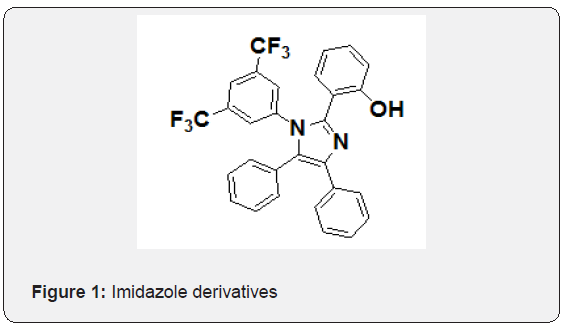
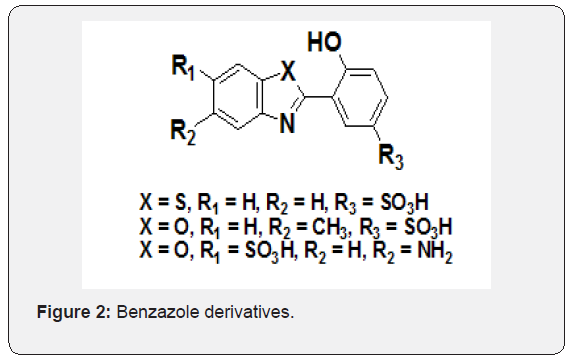
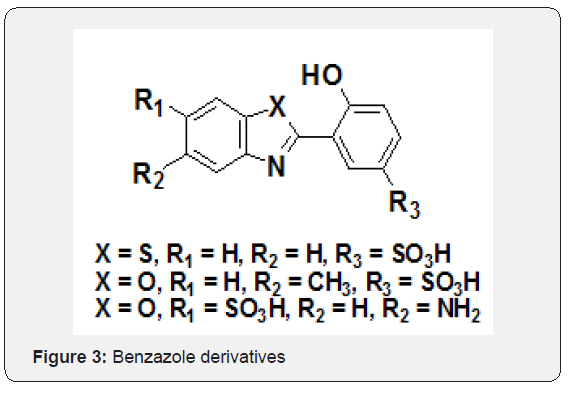


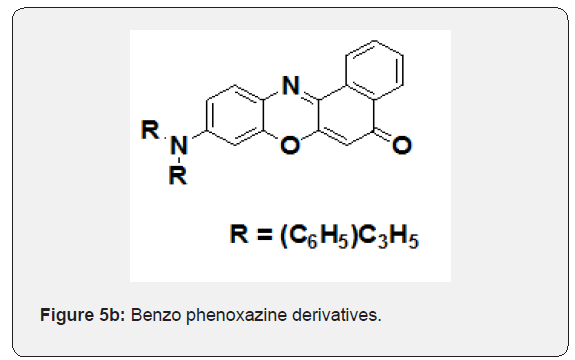
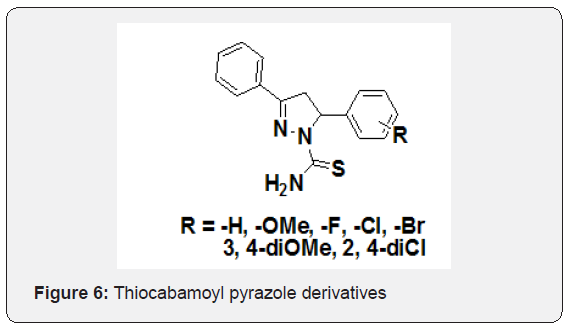
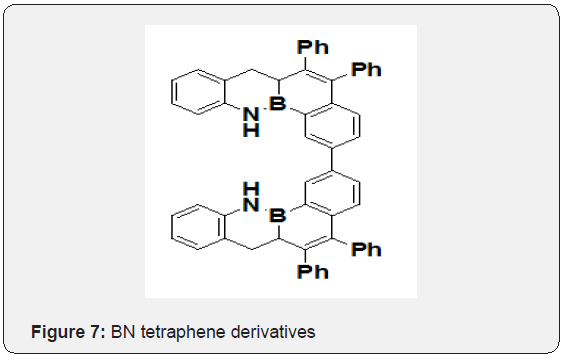
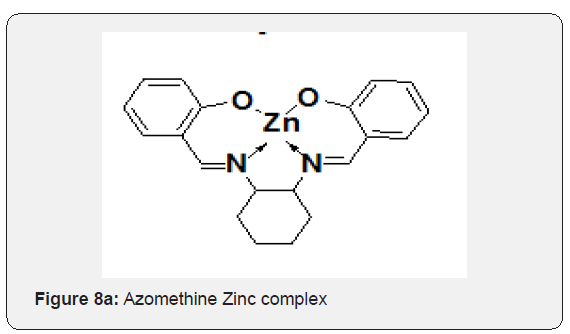
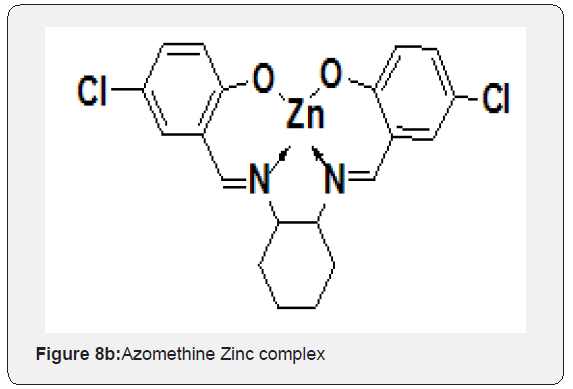
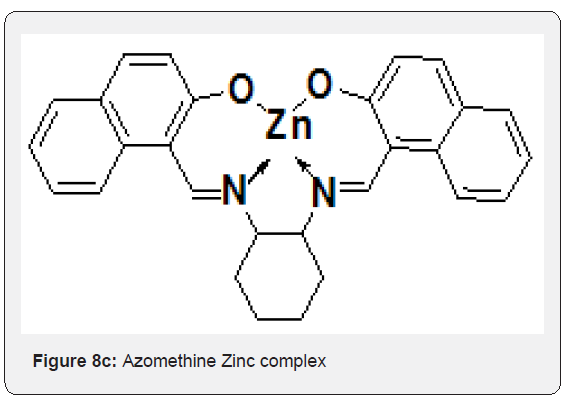
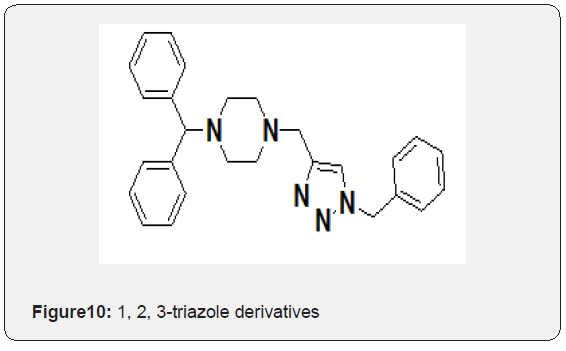
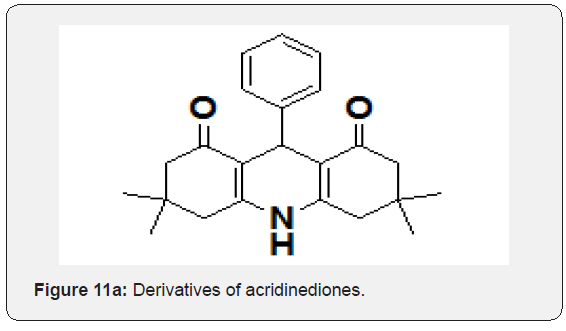
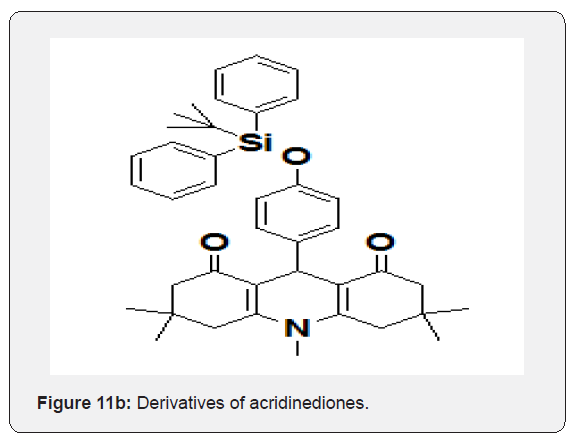
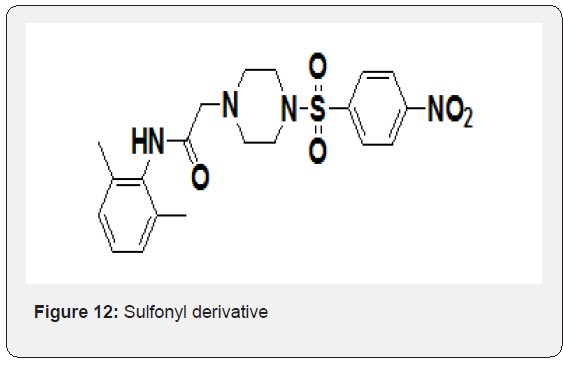
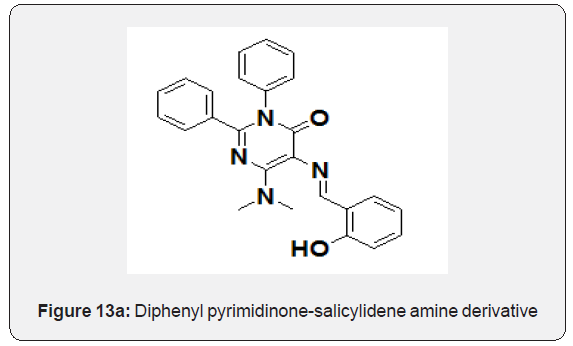
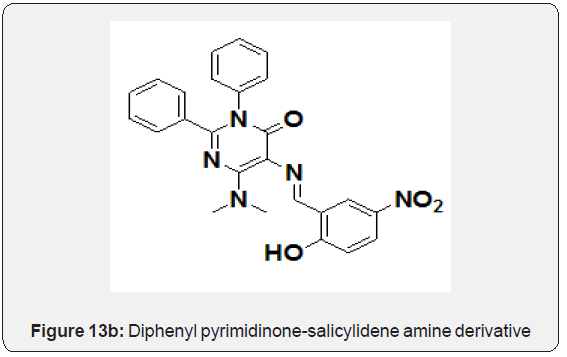
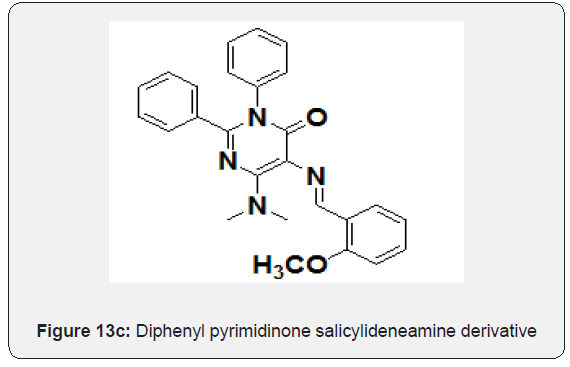
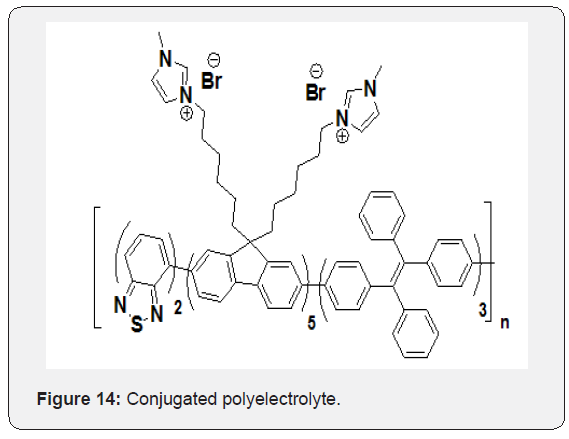
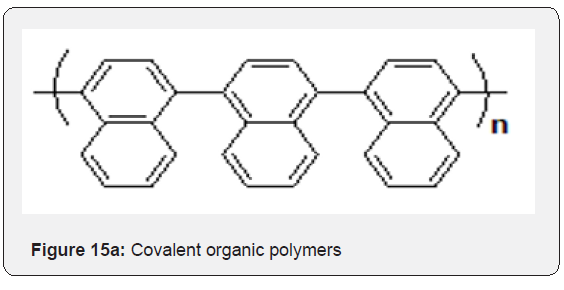
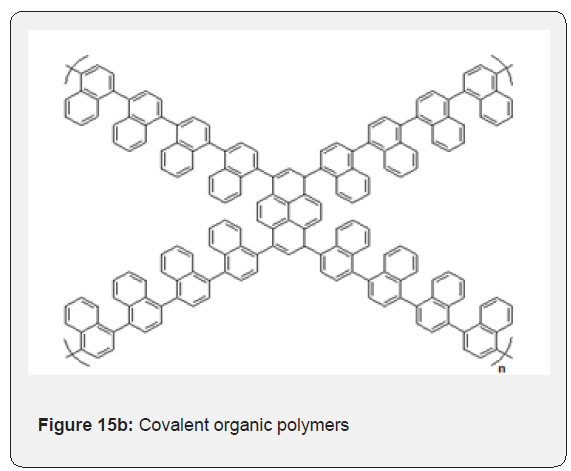
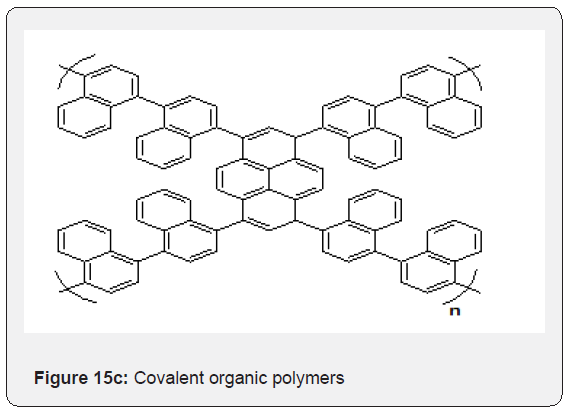

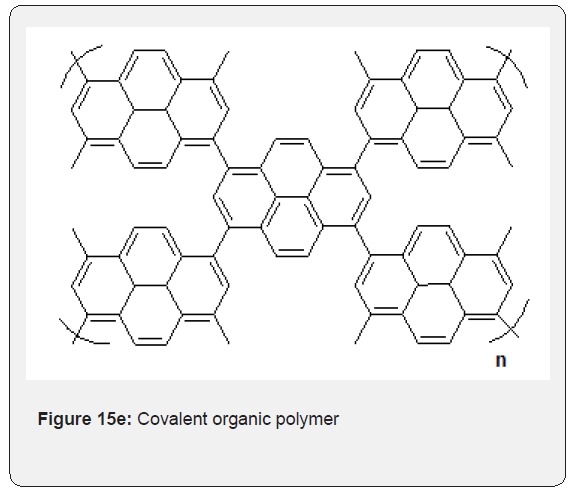
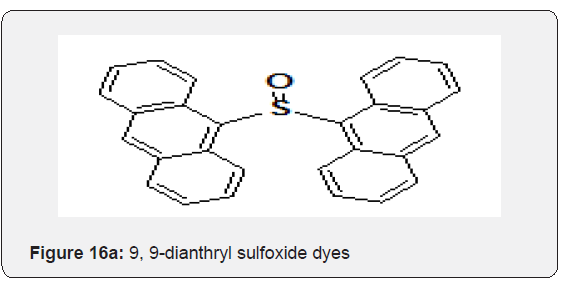
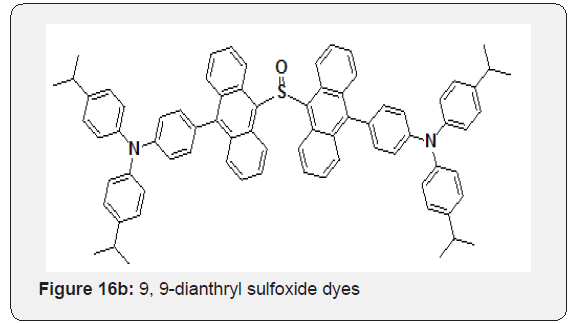

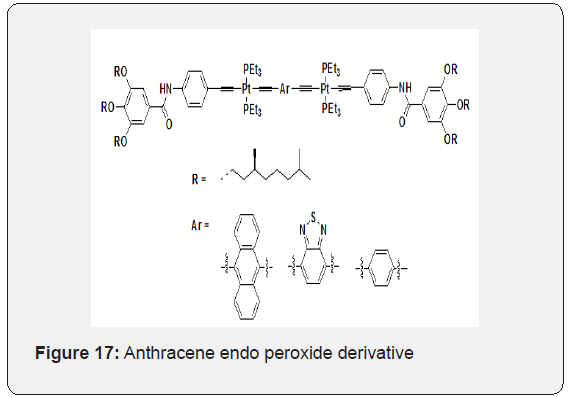
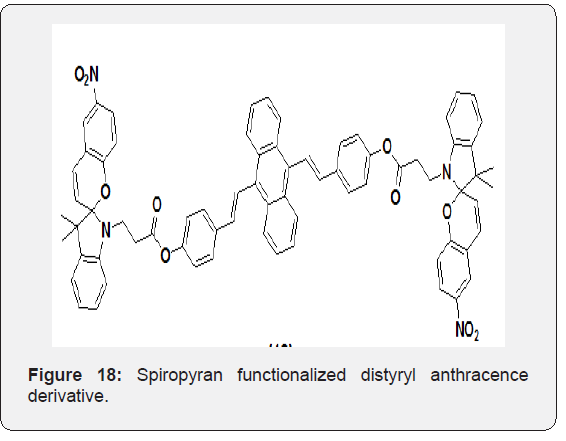
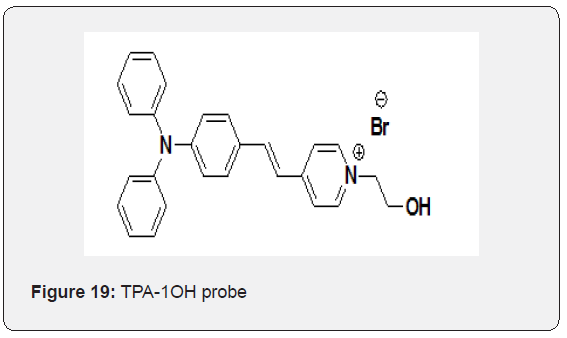
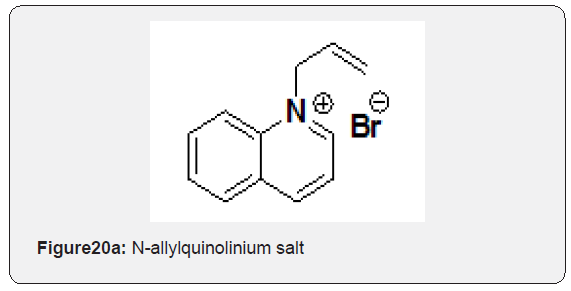
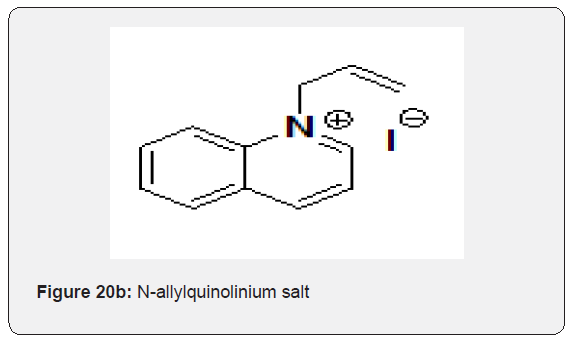
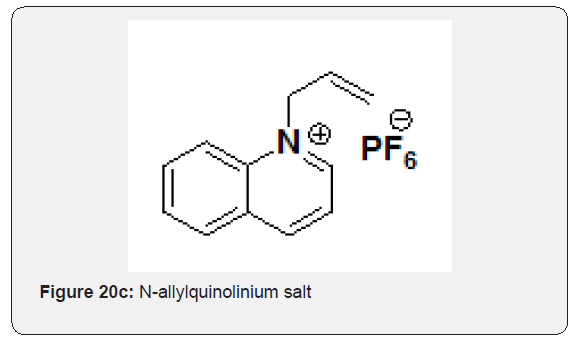
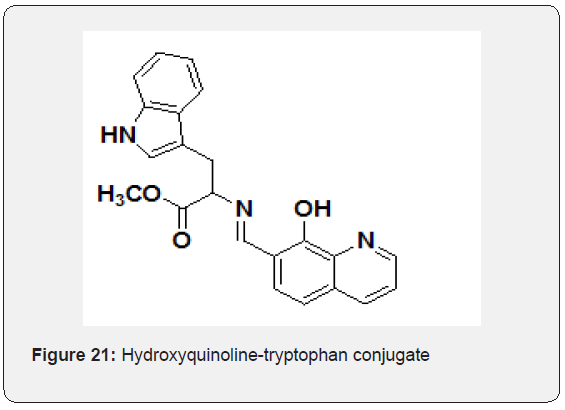
Acknowledgment
The authors are thankful to Tumkur University, Tumakuru.
References
- Champod C, Lennard C, Margot P, Stoilovic M(2004) Fingerprints and Other Ridge Skin Impressions. (1stEdn). CRC Press LLC.
- GS Sodhi, J Kaur (2001) Powder method for detecting latent fingerprints: a review.Forensic SciInt 120: 172-176.
- TC Fung, K Grimwood, R Shimmon, X Spindler, P Maynard, et al.(2011) Investigation of hydrogen cyanide generation from the cyanoacrylate fuming process used forlatent fingermark detection. Forensic SciInt212: 143-149.
- Y He, L Xu, Y Zhu, Q Wei, M Zhang (2014)Immunological multimetal deposition for rapid visualization of sweat fingerprints. AngewChemInt Ed 53: 12609-12612.
- HW Tang, W Lu, C Che, K Ng (2010) Gold Nanoparticles and Imaging Mass Spectrometry: Double Imaging of Latent Fingerprints. Anal Chem 82: 1589-1593.
- D Gao, F Li, J Song, X Xu, Q Zhang(2009) One step to detect the latent fingermarks with gold nano particles. Talanta, 80: 479-483.
- NJaber, ALesniewski, H Gabizon, SShenawi, D Mandler, et al. (2012)Visualization of Latent Fingermarks by Nanotechnology: Reversed Development on Paper A Remedy to the Variation in Sweat Composition. AngewChemInt Ed51: 12224-12227.
- C Xu, R Zhou, W He, L Wu, P Wu (2014) Fast Imaging of Eccrine Latent Fingerprints with Nontoxic Mn-Doped ZnS QDs. Anal Chem 86: 3279-3283.
- MK Ravindra, GRVijayakumar, KM Mahadevan, RB Basavaraj, GP Darshan, et al. (2019) New design of highly sensitive AIE based fluorescent imidazole derivatives: Probing of sweat pores and anti-counterfeiting applications. Material Science & Engineering C101: 564-574.
- GS Bumbrah, RM Sharma, OP Jasuja (2016) Research and reports in forensic medical science 6: 39-50.
- PAldhous (2005) Counterfeit pharmaceuticals murder by medicine. Nature434: 132-136.
- C Sheridan (2007) Bad Medicine.Nat. Bitotechnol25: 707-709.
- AMullard (2010) Theanticounterfeiters technological tool kit.NatMed 16: 361.
- MK Ravindra, GR Vijayakumar, KM Mahadevan, RB Basavaraj, GP Darshan, et al. (2019) New design of highly sensitive AIE based fluorescent imidazole derivatives: Probing of sweat pores and anti-counterfeiting applications. Material Science & Engineering C 101: 564-574.
- HL Barros, T Mileski, CDillenburg, VStefani (2017) Fluorescent Benzazole Dyes for Bloodstain Detection and Bloody Fingermark Enhancement. Forensic Chemistry5: 16-25.
- HL Barros, V Stefani (2016) A new methodology for the visualization of latent fingermarks on the sticky side of adhesive tapes using novel fluorescent dyes. Forensic Science International263: 83-91.
- XiaodongJin, Ran Xin, Shifan Wang, Wenzhu Yin, TongxiangXu, et al.(2017) A Tetraphenylethenebased Dye for Latent Fingerprint Analysis.Sensors and Actuators BChemical 777-784.
- Alsolmy E, Abdelwahab WM, Martinez V, Henary M, Patonay G (2020) Investigation of Benzophenoxazine Derivatives for the Detection of Latent Fingerprints on Porous Surfaces. Journal of Photochemistry and amp Photobiology A Chemistry 1-30
- Bruno N da Rosa, DalilaVenzke, TaísPoletti,Nathalia PK, de Lima(2020) J Braz Chem Soc 00: 1-5.
- Huanan Huang, Ying Zhou, MengWang,JianyingZhang,XiaohuaCao, et al. (2019)Regioselective Functionalization of Stable BN‐Modified Luminescent Tetraphenes for High‐Resolution Fingerprint Imaging. Angew Chem Int 58: 10132-10137.
- MSrinivas, HS Bhojya Naik, GRVijayakumar, KM Mahadevan, H Nagabhushana (2017) Synthesis, photoluminescence and forensic applications of blue light emitting azomethine-zinc (II) complexes of bis(salicylidene)cyclohexyl-1,2-diamino based organic ligands, Journal of Science: Advanced Materials and Devices2: 156-164.
- KKumar, HSingh, V Vanitha, R Singh, KB Joshi (2018) Sensor and Actuators B: Chemical.
- G Shivaraj, S Sreenivasa, RA Ramakrishna, TM Chakrapani Rao, H Naghabushana (2018) Regioselective Synthesis, Antibacterial, Molecular Docking and Fingerprint Applications of 1‐Benzhydrylpiperazine Derivatized 1,4‐Disubstituted 1,2,3‐Triazoles.Chemistry select 3: 8111-8117.
- R Suresh, SK Thiyagarajan, P Ramamurthy (2018) Sensors and Actuators B: Chemical. 258: 184-192.
- GKhan, S Sreenivasa, G Shivaraj, V Chandramohan (2019)Benzyl and Sulfonyl Derivatives of N-(2,6-dimethylphenyl)-2-(piperazin-1-yl)acetamide(T2288):Biological Screening and Fingerprint Applications. Oriental Journal of Chemistry35: 157-166.
- P Singh, H Singh, R Sharma, GBhargava, S Kumar (2016) AIE + ESIPT based red fluorescent aggregates for visualization of latent fingerprints. Journal of Materials Chemistry C 4: 11180-11189.
- AH Malik, A Kalita, P Krishnan Iyer (2017) ACS Applied Materials and Interfaces.
- M Wang, L Guo, D aping Cao (2018) ACS Applied materials and Interfaces.
- J Yuan, Peter R Christensen, Michael O Wolf (2019) Dynamic anti-counterfeiting security features using multicolor dianthrylsulfoxides.Chemical Science 10: 10113-10121.
- ZGao, Y Han, F Wang (2018) Cooperative supramolecular polymers with anthracene-endoperoxide photo switching for fluroscentanticounterfeiting. Nature communications 9: 3977.
- Qi Q, Li C, Liu X, Jiang S, Xu Z, et al. (2017) Solid-State Photoinduced Luminescence Switch for Advanced Anticounterfeiting and Super-Resolution Imaging Applications. Journal of American Chemical Society 139(45): 16036-16039.
- YaLong Wang, Chong Li, Hong Qing Qu, Cheng Fan, Peng Ju Zhao, et al.(2020) Real-Time Fluorescence in Situ Visualization of Latent Fingerprints Exceeding Level 3 Details Based on Aggregation-Induced Emission. J Am Chem Soc.
- QingxiaXionga, Chao Xu, Nianming Jiao, Xiang Ma, Yanqiang Zhang, et al.(2019) Pure organic room-temperature phosphorescent N-allylquinolinium salts as anti-counterfeiting materials. Chinese Chemical Letters30: 1387-1389.
- Singh P, Sharma P (2020) Nano cuboids: Impact of 8-hydroxyquinoline on tryptophan properties and its applications. Tetrahedron Letters.






























